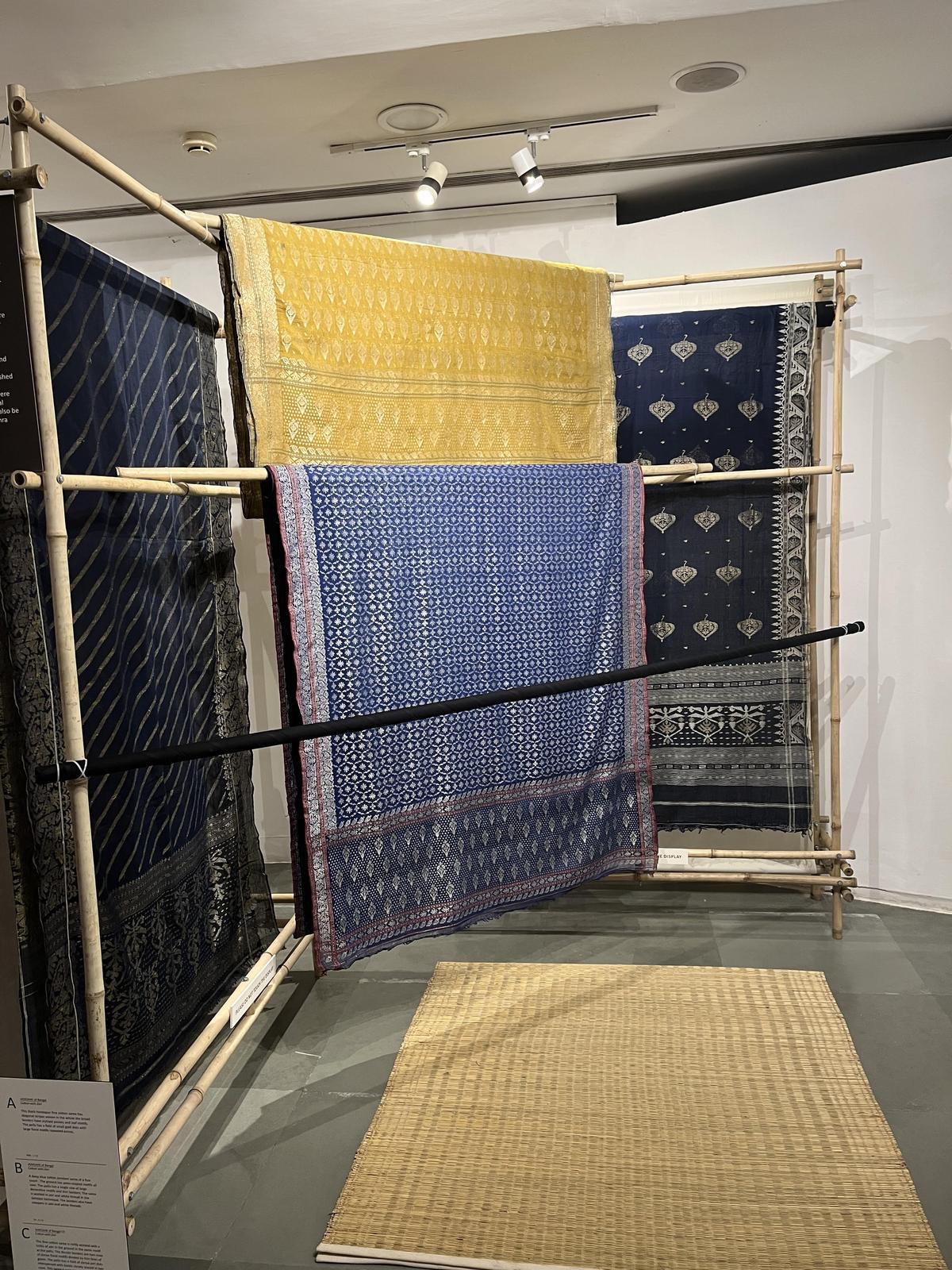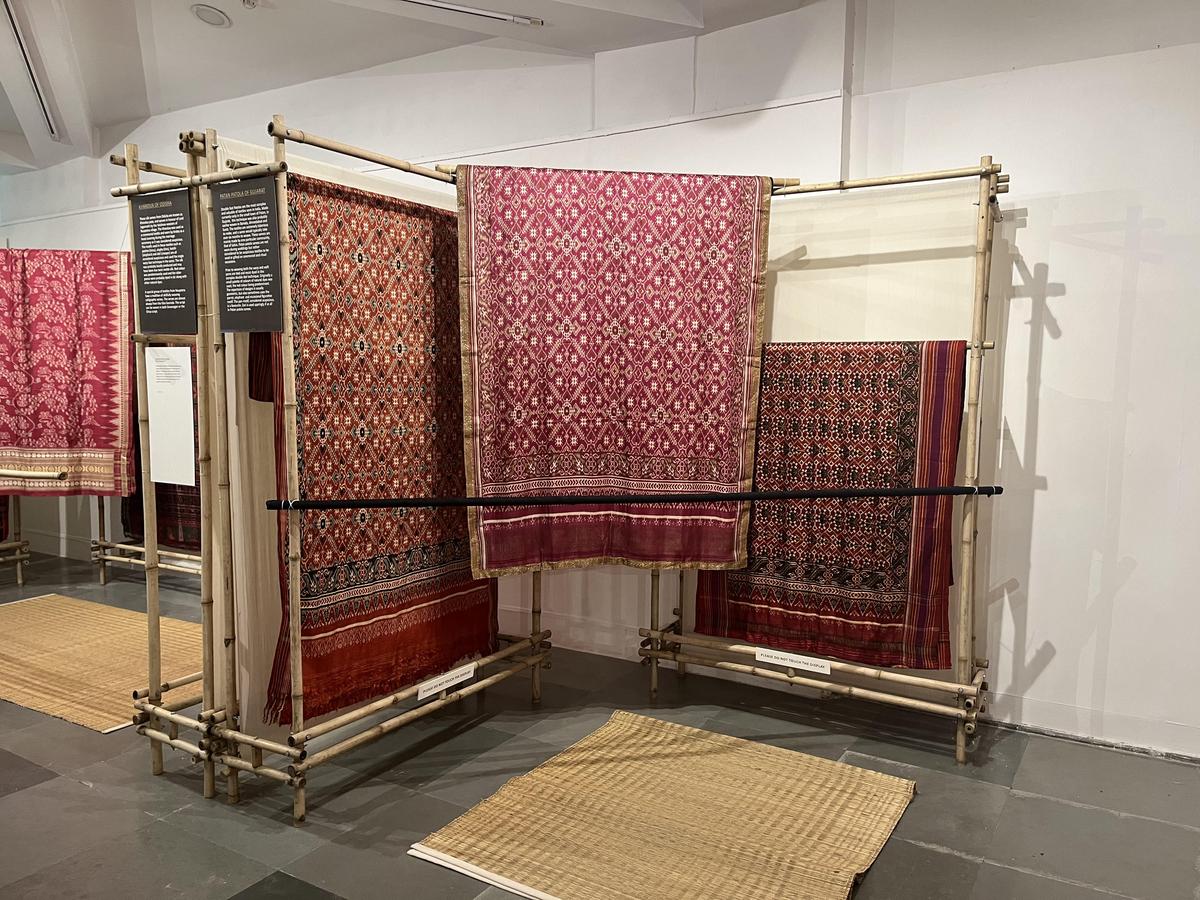
Tamil Nadu’s temple saris | Photo Credit: Special Arrangement
The sari (also spelled as saree) has a checkered history. While some say its origin dates to the 1st Century; others trace it to the Indus Valley civilization that flourished between 2800 and 1800 BC. Over time, this unstitched garment has taken on different forms and drapes, leaving us with remnants of our once-rich textile heritage.
This realization struck me while walking through the exhibition Heirloom Sarees: The Glory of India’s Woven Heritage l at Delhi’s India International Centre. Organized by the Delhi Crafts Council (DCC) to celebrate 25 years of the popular Sarees of India showcase, this presentation features 40 heirlooms loaned from private collections that are at least 50 to 75 years old.

Jamdani weaves | Photo Credit: Special Arrangement
“The idea behind the exhibition is to educate and document traditions, since most of these saris are no longer woven. The reasons are diverse and include raw material unavailability, diminishing weaving skills, astronomical prices, and of course a change in sensibilities,” says Purnima Rai, former president of DCC.
Once you enter the art gallery at the Kamaladevi complex in IIC, a set of brocade Paithani saris command your attention. Purples and pinks dominate the color palette, while the body of the sari is either left plain or has butties all over in zari. Traditionally, these saris were draped in cucumber style, similar to how a dhoti is worn.
Within this set, you will also find a special design with large roundels, which gets its name from the town Aarmoor in present-day Telangana.

Patan patola of Gujarat (right) and Odisha’s Khandua saris | Photo Credit: Special Arrangement
The temple saris of Tamil Nadu are equally rich, woven with heavily plied thick silk yarn. The broad borders are attached to the body with the korvai technique, which requires two or more weavers to handle the shuttle of the loom. “It was a challenging feat to select a limited number of saris from what turned out to be a surprisingly large and diverse collection generously loaned to us,” Purnima informs.
While weaving centers like Tamil Nadu, Gujarat and Uttar Pradesh are more prominent today, not many are aware of Odisha’s exquisite khandua saris made with the softest malda silk. A creation, with woven calligraphic verses of the Geeta Govinda, is striking.A collection note suggests it was a specialty of the weavers of Nau Patna.
The Ashavallis, too, have an illustrious legacy. Known after the town of Ashaval in Gujarat, the pieces have distinct Mughal-inspired motifs including creepers, florals, and animals, suggesting its popularity with the aristocracy. The Patan patola from the same state also vie for attention.
“Most saris displayed at the exhibition have typical motifs like peacocks, horses, and elephants or floral butties that are special and increasingly rare,” she shares.
The brocades from Benaras may be the most known of the lot, but the sheen of the zari is different from what you see today. Earlier, real gold or silver was used, says author, educator and board member of DCC, Vandana Bhandari, who took us on a guided walkthrough of the exhibition. “The richness of gold, silk, and the patterning make it stand out,” she adds.
While most saris were previously woven in silk, jamdani was handcrafted in cotton. “The mulmul in the sari is of fine quality, while the designs are made with thin or thick zari yarn. It is crafted with a supplementary weft technique of weaving,” says Vandana.
Heirloom Sarees: The Glory of India’s Woven Heritage is on till September 8, 11 am-7 pm, at the India International Centre, Max Mueller Marg, Lodhi Estate.

